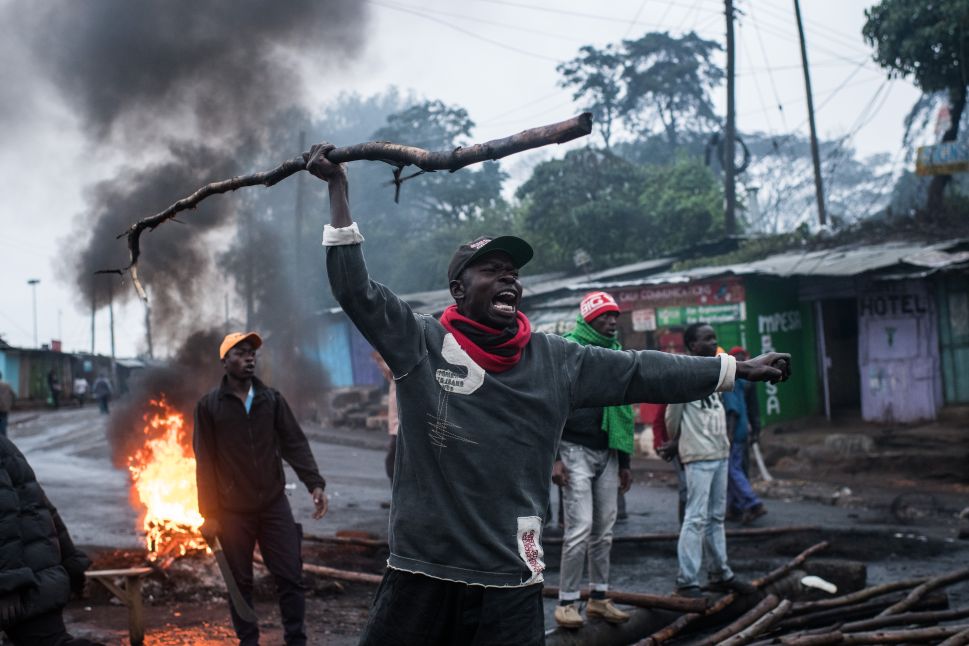
After its controversial election was challenged by the opposition, Kenya’s having another go at the ballot box. Once again, this contest is marred by violence and killing.
Kenya’s Legacy of Political Violence
Ten years ago, Kenyans fought after an election and it dissolved into chaos. Parties and candidates battled each other for public support, and then took to the streets to continue the struggle, causing bloodshed. The opposition’s likely win at the ballot box turned into yet another ruling party win, amid charges of electoral fraud. Thousands were killed and hundreds of thousands were displaced from their homes. Members of Parliament (MPs) were targeted and killed during this violence, which both campaigns called “genocide” by the other side. Earlier elections in 1992 and 1997 produced violence as well.
The contest between the ruling faction and the opposition tend to break down along tribal lines. On one hand, there are the Kikuyu people, who tend to back the regime in place today, the same faction who have ruled the country since the 1960s. Then there are the Luo people, who generally support the opposition candidate Raila Odinga, a businessman trying to break the dominant ethnic tribe’s hold on political power. The two ethnic groups generally mix like the Hutus and Tutsis from Rwanda, engaged in bloody massacres.
What’s ironic about all of this is that Kenya is hardly a poor country. In fact, it’s one of the most stable countries in Africa, before the violence. Even after these controversial elections produced bloodshed, there are millions to be made from tourism.
Former UN Secretary General Kofi Annan was able to negotiate a truce, and eventually a “National Accord and Reconciliation Act of 2008,” which would temporarily reach a political solution and terminate the election killing and looting. Opposition figures were brought into the government as well.
Five years later in 2012, and again this year, the results are marred by bloodshed. Regardless of which leader is running in the Kikuyu tribe’s “Party of National Unity” (PNU), the faction always in power going back to the country’s founding, with leaders like Jomo Kenyatta and Daniel Arap Moi. Odinga, like his father, always seems to be the hope of the opposition Luo, otherwise known as the “Orange Democratic Movement” (ODM).
What’s Different This Time in Kenya
Protests against this year’s election (which led to the death of the official in charge) led the government to announce a new contest, which is going on now. Instead of being pleased, the opposition ODM thinks this new election is a sham.
Odinga and ODM are trying to boycott the polls and threaten those who are trying to vote. Security forces are firing on protesters, and this election rerun is looking like yet another redo of the violence that has plagued the country every five years.
Elections are integral for democracies. They mobilize the public behind creating a new state, ending an undemocratic order, or reviving interest in a country where freedom had been flagging. Holding these contests is central to the UN peacekeeping missions and nation-builders. But unfortunately, evidence shows that such elections do not tend to reduce conflict. One reason cited is a lack of security for such important contests. Another comes from the lack of constraints upon the behavior of candidates. Such contestants in African elections are known to use a wide range of tactics, including scaring voters, buying votes, stuffing ballot boxes, and engaging in violence.
What’s going on in Kenya is hardly a matter of technical problems related to the ability of one to vote. In Kenya, it’s more about the institutions and the rule of law, where rulers are held to the same standard as the ruled. As for the institutional failure, scholar Suzanne Mueller outlines the specific shortcomings. Without a professional executive branch, presidents have ruled more by whim than anything else. Parties are increasingly linked to promoting ethnic groups and becoming “clientist,” more about trading favors rather than representing the people. This makes every election a high-stakes event for the average Kenyan because the winner rewards one ethnic group and punishes the loser.
Why This Matters: Terrorism on the March in East Africa
As noted earlier in an earlier article, bloody contests in Kenya have consequences for the region and the United States because the notorious terror group al-Shabab from nearby Somalia has been launching attacks in Nairobi, the country’s capital. Tourist hot spots, a shopping mall, and a college have been brutally attacked.
Al-Shabab is hardly as powerful and sophisticated as ISIS or al-Qaeda. But the Kenyan security force is overworked, underpaid, and led by a divided country.
We know from experience that terrorism thrives in failed states. Whether it’s al-Qaeda operating in the post-Soviet Afghanistan under the protection of the Taliban in the 1990s and early 2000s, or ISIS emerging during the Syrian Civil War with Iraq’s political instability providing another opening a few years ago. Now there are fears that Libya may face the same fate. And Kenya won’t be far behind as long as this unrest occurs.
John A. Tures is a professor of political science at LaGrange College in LaGrange, Ga. He can be reached at jtures@lagrange.edu. His Twitter account is JohnTures2.

